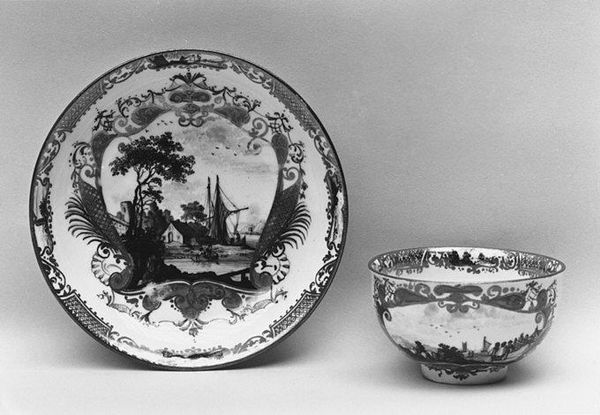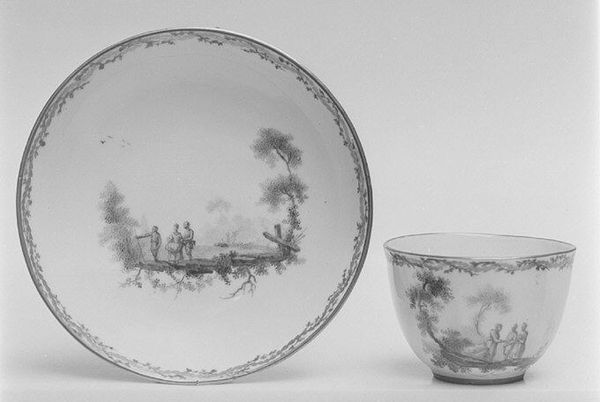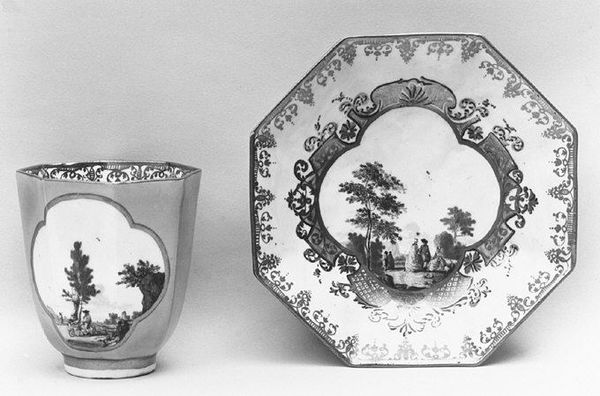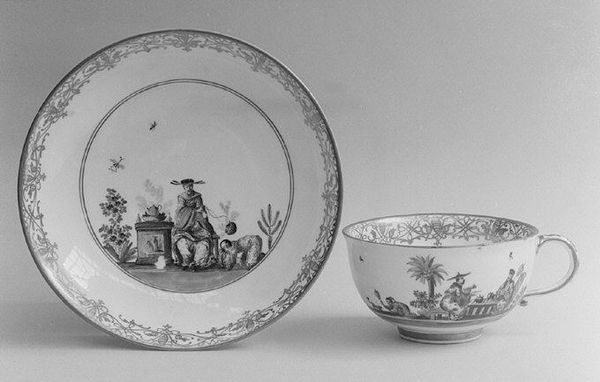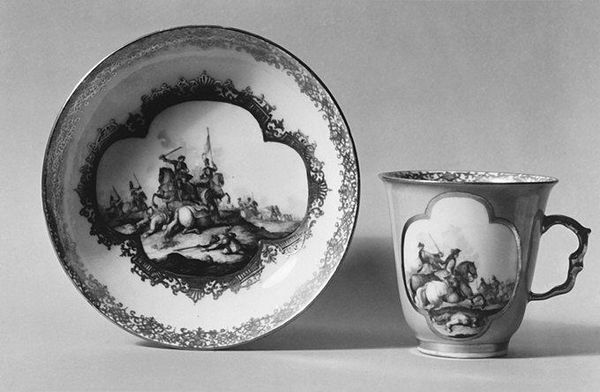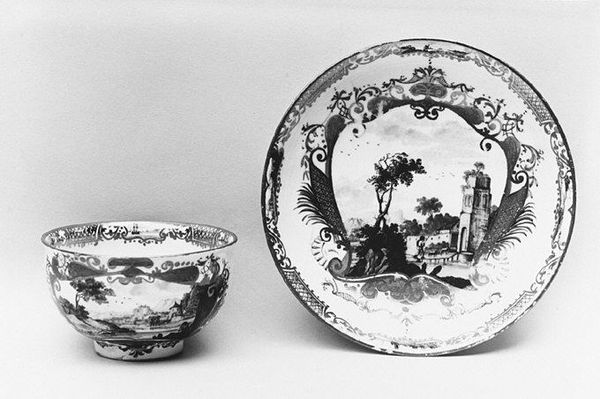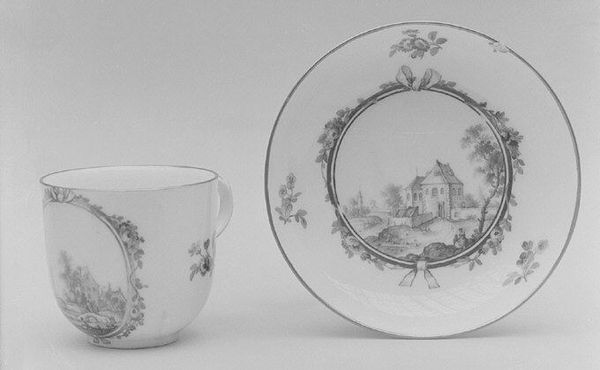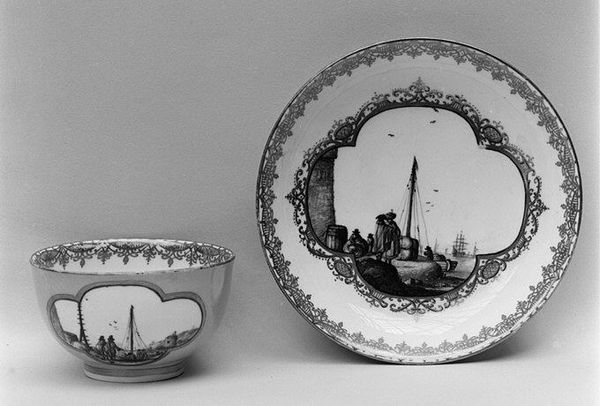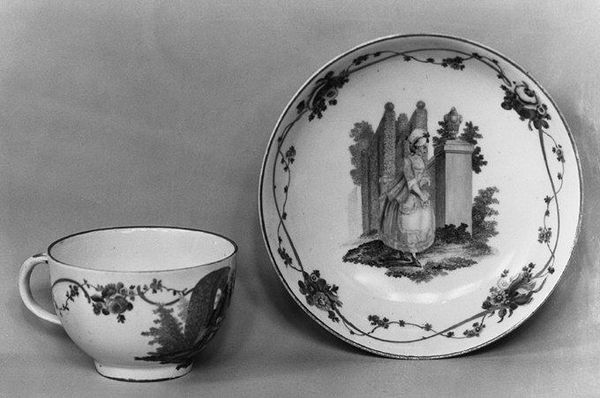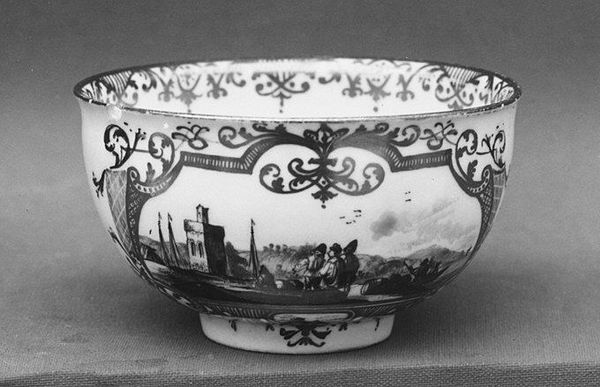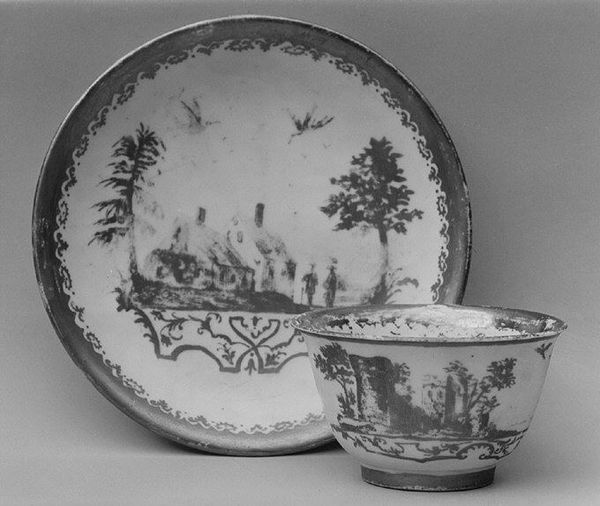
print, ceramic, porcelain, sculpture
# print
#
landscape
#
ceramic
#
porcelain
#
sculpture
#
decorative-art
#
miniature
Dimensions: Height (teabowl .259): 1 3/4 in. (4.4 cm); Diameter (saucer .260): 5 1/8 in. (13 cm)
Copyright: Public Domain
Curator: Before us we have a "Teabowl and saucer" created between 1739 and 1753 by the Meissen Manufactory. The set is a testament to the intricate craftsmanship possible with porcelain, featuring delicate painted scenes. Editor: It strikes me immediately as having a reserved quality; its monochrome palette cultivates a rather serious and muted tone. The fine brushwork in these miniature landscapes, though, is remarkable. Curator: Absolutely. Consider the social context: tea culture was burgeoning in Europe. Porcelain became deeply entwined with status and colonial trade. Examining the painted scenes on both pieces reveals insight into European perspectives on labor and the lives of individuals in port cities, hinting at commerce and potential exploitation within trade routes. Editor: Yes, the landscapes presented appear quite detailed for such a small surface, and the overall composition is engaging: each decorative element is thoughtfully positioned, the balance between empty space and form contributes to a harmony. Did the decorative schemes on functional wares affect pictorial landscape art overall? Curator: In a sense. Objects such as this enabled the circulation of imagery and influenced design sensibilities. Analyzing this porcelain in conversation with class, gender, and global exchange underscores its cultural and economic resonance in society. Who got to enjoy such refined scenes on a daily basis? How did ownership impact class and labor dynamics? Editor: I concur. We can find evidence that landscape and figurative works for high society often found their ways to lower echelons as patterns of imitation became ubiquitous across media in decorative applications, fabrics, and beyond. Still, I remain awestruck by the composition and fine materiality of the teabowl set and its decoration, creating a harmonious balance of tones. Curator: By interrogating objects such as this—from aesthetic design to historical context—we might gain greater appreciation for labor relations and societal structures reflected in something as commonplace as the afternoon tea service. Editor: Precisely; to consider both its formal aspects, alongside its material origin, has enriched our encounter.
Comments
No comments
Be the first to comment and join the conversation on the ultimate creative platform.

